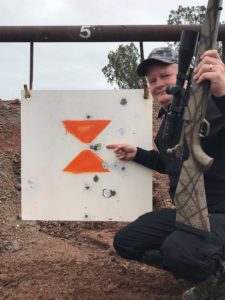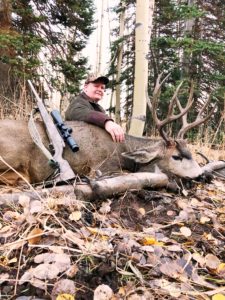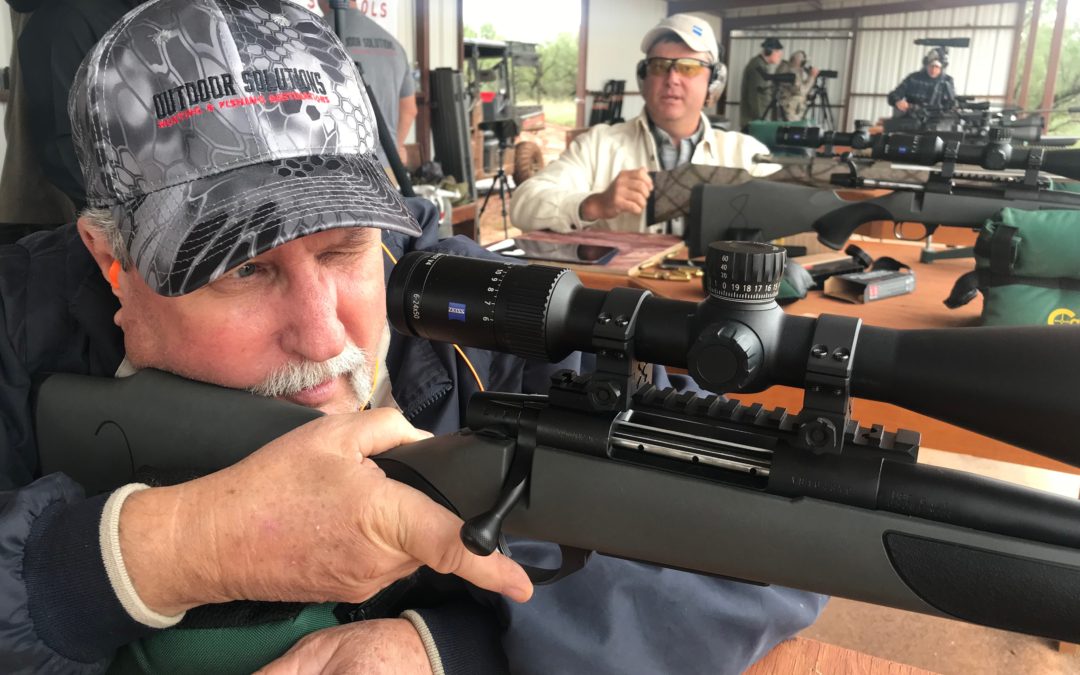When hunting big game, one of the most important things to learn is proficiency with a firearm. Learn more about our Long Range Schools and range locations.
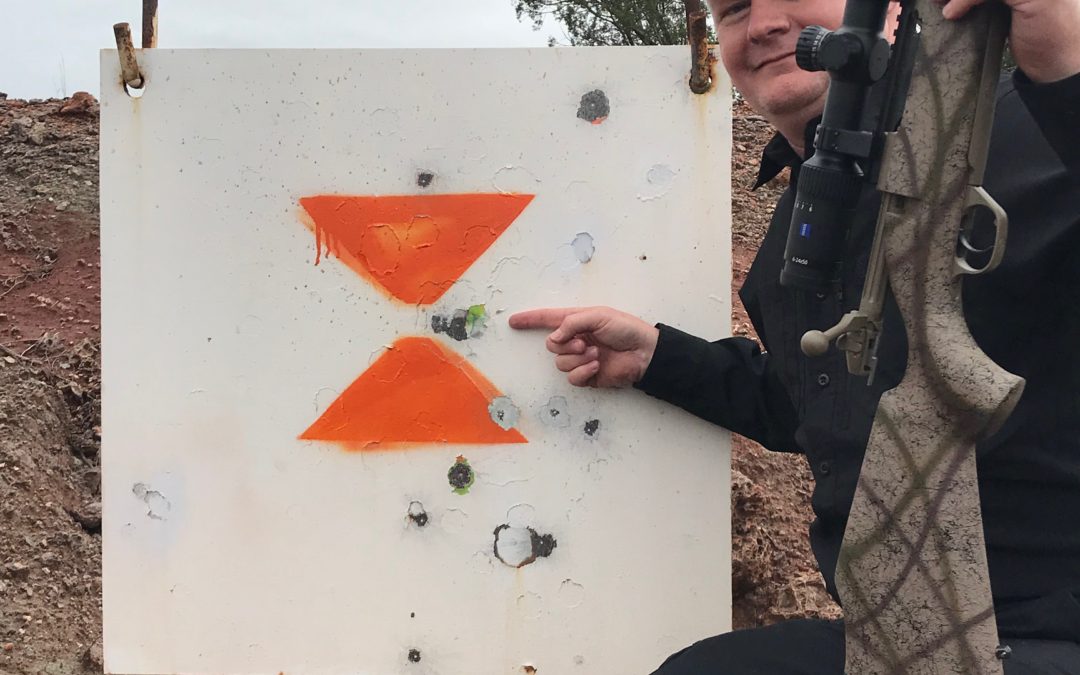
Shoot Long Distances to Become a More Successful Hunter
Shoot Long Distances to Become a More Successful Hunter
Shoot Long Distances to Become a More Successful Hunter
Outdoor Solutions client takes trophy mule deer in Utah
As rifle season looms around the corner, hunters filter to their local ranges or fields to zero rifles and put in some trigger time. For those hunting timber stands, sub 100-yards shots are the norm and are easily achieved after minimal practice, but hunters who stalk the open plains and back country hills may find themselves stretched to their limits when a long shot presents itself. With many hunters rarely ringing steel past 200 yards, expert instruction from a long-range shooting school will give them the knowledge, tools and confidence to not only reach out to longer distances, but also improve their accuracy on shorter shots.
Long-Range School Training
Recently, Scott Vaughn participated in Outdoor Solutions’ long-range shooting school in Texas and followed it with a successful mule deer hunt in Utah. Originally from Florida, Vaughn works and resides in Nicaragua. Vaughn learned the basics of shooting and safety at an early age and routinely competes on a 25-meter pistol shooting team with an occasional stint in rifle competitions. When Vaughn found the opportunity to sharpen his shooting skills for target shooting and hunting, he jumped at the chance.
“It just appealed to me the thought of learning how to shoot out to 1,000 yards,” said Vaughn. “It’s unique. Not a lot of people can say they hit targets at that distance. It was more of a personal deal.”
During the two-day school, Vaughn learned of all the variables involved in longer shots and how best to interpret and compensate for these variables during shooting out to long distances.
“The instructors are all expert trainers and presented the information is a way I could easily understand,” said Vaughn. “After the first half of day one, I was hitting the target at 1,000 yards.”
The Right Tools for the Job
Through its partnerships with Weatherby and ZEISS optics, Outdoor Solutions put together a rifle/optic combo best suited for the shooting class and the upcoming mule deer hunt. Vaughn shot a Weatherby Mark V Terramark RC, chambered in 6.5 Creedmoor and topped with a ZEISS Conquest V4 6-24×50 riflescope, both rather affordable options for long-range shooting.
“As far as an off-the-shelf gun, it was high end but not custom made,” said Vaughn. “The combo with Zeiss worked well. Once you go to the school, you figure out that you don’t need a $4,000 scope to hit 1,000 yards. The setup worked perfectly and the caliber was great because it doesn’t kick much but still takes game.”
Vaughn came out of the long-range shooting school with a newfound confidence in his abilities as a shooter and in his equipment.
“It’s not that you will be shooting deer at 750 yards all the time, but when you have a 350-yard shot, you feel comfortable taking it,” said Vaughn. “Before the school, 300 yards was a long shot for me.”
Applying Long-Distance Skills in the Field
With limited time in the U.S., Vaughn relied on Outdoor Solutions extensive experience in helping find the right outfitter for the hunter to test his new shooting skills. Previous Outdoor Solutions’ clients experienced great success at an outfitter based in Utah and the staff made their recommendation to Vaughn.
“I didn’t have time to go and stake out a hunting area,” said Vaughn. “I could go to Florida and hunt for free, but it would take three weeks and I still would have to get lucky. Knowing this place had a high success rate helped me make the decision to go as well.”
At the conclusion of the long range shooting school, Vaughn boarded a plane for Salt Lake City where the outfitter picked him up and drove the one-hour trip to the lodge.
“There were 18 total at the lodge during this hunt,” said Vaughn. “We had a dinner together where they paired us up with our individual guides and started out early the next morning. As amazing as it sounds, there were 18 people and the only time we saw each other was at the lodge because we all were hunting such huge amounts of property. I never saw another hunter while in the field.”
After an early morning start, Vaughn and his guide rode in a side-by-side on the lookout for muleys. The duo dismounted and took to foot to climb for a better vantage point.
“We found a few that the guide liked in the morning across the mountain, but they got lost in the woods,” said Vaughn. “We headed back to have lunch and returned to the spot and found a good buck. We backed away and wrapped around and went where we thought we would see them. We saw the buck from earlier and a better buck was there too at 165 yards.”
Vaughn steadied his rifle and pulled the trigger, dropping the buck where it stood. Although the shot was relatively short for a Western hunt, Vaughn cites the training he received as key to making the precise shot under pressure.
“I kind of lucked into a short shot, but if the deer had been on the other side of the mountain, he would have been at 550 yards,” said Vaughn. “I still would have felt comfortable taking the shot. Of course, if you get a short shot, you take it. The training just gives you a lot of confidence.”
Vaughn returned home to Nicaragua with a fresh skill set, newfound confidence in his shooting and the memories of a fruitful hunt. The hunter has a bit of advice for those who believe their shooting skills are enough to get by.
“I took my cousin along and he has hunted his entire life,” said Vaughn. “His mindset was ‘who is going to teach me how to shoot, I have been shooting my whole life.’ But, even though my cousin knows how to shoot, these guys know how to shoot long distances. Just knowing how to shoot long distances really gives you a lot more confidence shooting at short ranges. It changes your outlook on what’s a safe shot or not.”
Vaughn chose to rely on Outdoor Solutions’ experience and relationships with the most successful outfitters in the U.S. to book his hunt. This not only saved him valuable time, but also gave him confidence knowing he would be hunting with the best.
“I think it’s important because of the trust factor,” said Vaughn. “If I got on the Internet and looked up where to hunt out West and tried to do it on my own, it’s luck of the draw. It just gives me confidence that if Outdoor Solutions set it up, it would be a good hunt with a good guide. I had a great time and took a good mule deer. Without their help and guidance, who knows what would have happened.”
Making The Shot: Outdoor Solutions’ Long Range School
Gun Review: The Benelli Lupo in 6.5 Creedmoor
The Benelli Lupo in 6.5 Creedmoor. Read more to discover how this Italian bolt-action stack up as a long-range hunting rifle.
Long Range Hunting: How and Why
Looking to stretch out your effective shooting range? Here’s the How and Why when it comes to long range hunting.
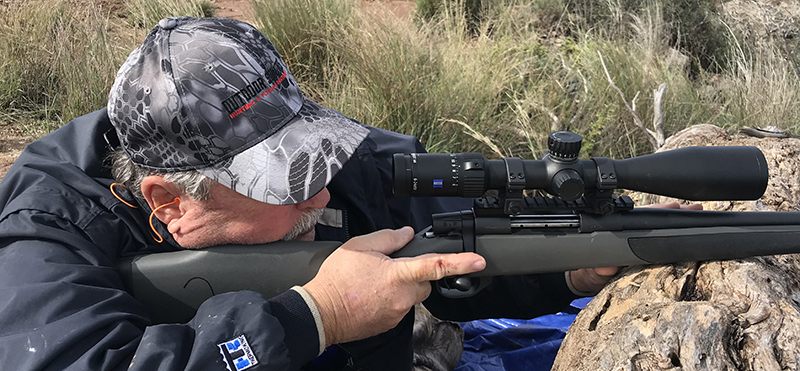
Long Range Shooting Schools
Want to learn more about our long range shooting schools? Click on the button below. Our courses are designed to build your confidence as a hunters or shooter no matter the experience level.

